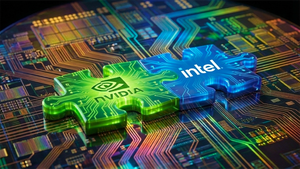
Wall Street is buzzing with a familiar, yet unsettling, narrative: the increasing concentration of market value in a handful of mega-cap technology companies, leading to valuations that harken back to the infamous dot-com bubble. This top-heavy market structure is raising red flags among experts, who warn of potential fragility and the risk of significant pullbacks should these dominant holdings falter. The current rally, heavily skewed towards a select few, masks underlying vulnerabilities and prompts crucial questions about the broader market's health and stability.
The immediate implications are profound. Investors, particularly those in passive, market-capitalization-weighted indices, find their portfolios increasingly tied to the fortunes of these few giants. While their stellar performance has fueled overall market gains, it also introduces a heightened level of systemic risk, where a downturn in one or two of these companies could disproportionately impact the entire index, leading to amplified volatility and potentially deeper drawdowns for many.
Unpacking the Tech Tsunami: Why Concentration Matters
The current market landscape is overwhelmingly shaped by the extraordinary dominance of what are often dubbed the "Magnificent Seven" – Alphabet (NASDAQ: GOOGL), Amazon (NASDAQ: AMZN), Apple (NASDAQ: AAPL), Meta (NASDAQ: META), Microsoft (NASDAQ: MSFT), Nvidia (NASDAQ: NVDA), and Tesla (NASDAQ: TSLA). As of early to mid-2025, these tech behemoths, along with a few other large-cap companies, command a staggering 37% to 38% of the S&P 500's total market capitalization. This level of concentration is among the highest in decades, with some analysts suggesting a narrower measure of market concentration has never been higher, signaling an unprecedented focus of wealth and influence.
This narrow leadership in the market has driven valuations in the technology sector to levels not witnessed since the internet bubble of the late 1990s. The information technology sector now comprises over 33% of the S&P 500, mirroring the dot-com era. More broadly, the Technology, Media, and Telecommunications (TMT) sector's market capitalization within the S&P 500 has climbed to 44.2%, surpassing recent highs and nearing the historical peak of 44.7% seen in February 2000. Specific examples highlight these elevated valuations: the Nasdaq 100, while not at its dot-com bubble P/E of 70+, still boasts a P/E ratio of 33. Tech stocks in the S&P 500 are trading at an average of 41 times earnings and nearly 10 times sales. Nvidia (NASDAQ: NVDA), a leader in AI chips, stands out with a P/E multiple of 57 and is valued at 29 times its 12-month sales. Other companies like Broadcom (NASDAQ: AVGO) and Advanced Micro Devices (NASDAQ: AMD) are priced at 110 times and 97 times earnings, respectively, while Palantir Technologies (NYSE: PLTR) commands a market value over 100 times its revenue.
Experts like those at UBS have openly warned that artificial intelligence sector valuations are fast approaching dot-com era levels, sparking concerns about sustainability. However, it's crucial to note differences: today's tech giants are often diversified, cash-rich, and highly profitable, unlike many speculative ventures of 1999. Their profit margins average 26%, more than double 2004 levels, providing a stronger fundamental underpinning. Despite this, the sheer concentration and rapid appreciation present a significant "concentration risk," as articulated by Goldman Sachs strategists. Should the fundamentals of these dominant companies fail to meet lofty expectations, or if they face regulatory headwinds, the broader market could experience a severe correction, disproportionately affecting undiversified portfolios.
The Uneven Playing Field: Winners and Potential Losers
In this highly concentrated market environment, the "Magnificent Seven" and other mega-cap tech players have undeniably emerged as significant winners. Their robust financial performance, innovative product cycles (particularly in AI), and massive market capitalization have propelled their stock prices to unprecedented heights, contributing the lion's share of market gains. Investors holding these stocks, or those in market-capitalization-weighted index funds and ETFs that heavily feature them, have reaped substantial rewards, as their investments have been carried along by the upward momentum of these giants. The ability of these companies to generate massive cash flows and expand into new markets continues to attract significant capital, reinforcing their market dominance.
Conversely, the potential losers are many and varied. Investors with undiversified portfolios, particularly those heavily reliant on a few of these top stocks, face amplified risks. A significant pullback in even one or two of these dominant companies could severely impact their overall portfolio value. Furthermore, the immense focus on mega-caps has often overshadowed smaller and mid-cap companies across various sectors, leading to a "narrow rally" where the struggles of other businesses are masked by the stellar performance at the top. This dynamic means that many smaller, otherwise healthy companies, struggle for investor attention and capital, potentially underperforming the broader market despite solid fundamentals. Goldman Sachs, for instance, highlights that high concentration is historically associated with lower S&P 500 returns over the longer term, suggesting a challenging environment for a wider array of stocks.
Moreover, the entire market faces a systemic risk. Should these highly valued, concentrated holdings falter due to unforeseen events – be it a significant regulatory crackdown, a major technological disruption to their business models, or simply a broad market correction driven by macroeconomic factors – the ripple effect could be widespread and severe. The lack of diversification inherent in such a top-heavy market means that the entire financial system becomes overly dependent on the continued success of a select few, increasing the potential for heightened volatility and a less resilient market in the face of adverse events.
Industry Implications and Historical Echoes
The prevailing market concentration fits into a broader trend of "winner-take-all" economics, where network effects, economies of scale, and technological advantages allow a few dominant players to capture an outsized share of market value. This phenomenon has created a significant divergence between the performance of the largest companies and the rest of the market, leading to a "narrow rally." This concentration directly impacts broader industry trends by siphoning capital and attention away from emerging businesses and less glamorous sectors, potentially stifling innovation outside the established giants. The ripple effects extend to competitors and partners, as these mega-caps often dictate terms, set industry standards, and can acquire or outcompete rivals with their vast resources, making it harder for new entrants or smaller players to thrive.
From a regulatory standpoint, the sheer size and market power of these companies are drawing increasing scrutiny globally. While not directly tied to current market concentration, sustained market instability stemming from a collapse of these dominant players could certainly trigger more aggressive regulatory or antitrust interventions. Policymakers are already grappling with questions of market dominance, data privacy, and competitive practices in the tech sector; a significant market downturn linked to over-concentration could accelerate calls for more stringent oversight and even structural changes. The potential for systemic risk, where a few companies could destabilize the entire market, makes this a salient concern for financial regulators.
Historically, comparisons to the dot-com bubble of 1999-2000 are inevitable and illuminating. The TMT sector's share of the S&P 500 then peaked at 44.7%, eerily close to current levels. While today's tech giants boast stronger fundamentals, higher profitability, and more diversified business models than many speculative ventures of the late 90s, the concentration of gains and elevated valuations are stark reminders. Periods of high market concentration have historically been associated with lower long-run returns and higher volatility, often preceding significant market drawdowns. Invesco's Q2 2025 commentary notes that extreme concentration in the S&P 500's top 10 companies tends to revert to the mean over time, suggesting that the current imbalance is unlikely to persist indefinitely, and that such a reversion could benefit equal-weight indices.
What Comes Next: Navigating the Concentrated Market
In the short term, Wall Street is likely to maintain a watchful eye on the performance of these mega-cap tech stocks. The "momentum trade," which has heavily favored these giants, could show signs of faltering, leading to increased scrutiny of their quarterly earnings and growth forecasts. Any slight miss on expectations or a hint of slowing growth could trigger outsized reactions given their elevated valuations. Investors should brace for continued market volatility, as the overall index remains highly sensitive to the fortunes of a select few. The immediate future will also test the resilience of the broader market, as experts debate whether the average stock can finally start to outperform, or if the mega-cap rally will reassert itself.
Looking further ahead, the long-term outlook suggests a potential shift towards greater market breadth. Many strategists, including those at Goldman Sachs, advise investors to diversify, suggesting a partial shift from market-capitalization-weighted indices to equal-weighted indices and exploring opportunities across different strategies and regions. This strategic pivot reflects the growing belief that the extreme concentration is unsustainable over the long run, and a reversion to the mean could offer opportunities in currently undervalued sectors. Goldman Sachs forecasts average S&P 500 annualized returns of just 3% over the next decade, sharply below historical averages, underscoring the challenges posed by current valuations and concentration.
Potential market opportunities may emerge in small-cap companies and other sectors that have been overlooked during the mega-cap tech boom. As the "momentum trade" potentially falters, capital could rotate into these areas, seeking better value and diversification. Challenges include navigating increased market volatility and the risk of significant drawdowns if the current market leaders experience a sharp correction. Scenarios range from a gradual unwinding of concentration, leading to a broader-based rally, to a more abrupt and painful correction if investor confidence in the mega-caps erudites quickly. Adaptations required from investors include a renewed focus on fundamental analysis, prudent risk management, and a commitment to diversification beyond the top-heavy indices.
Conclusion: A Delicate Balance
The current state of Wall Street, characterized by unprecedented market concentration and tech valuations reminiscent of the dot-com era, presents a delicate balance. While the "Magnificent Seven" have demonstrated remarkable innovation and profitability, fundamentally supporting much of their growth, the sheer top-heaviness of stock indexes introduces significant risks. The potential for increased market volatility, systemic vulnerability, and diminished diversification benefits are clear takeaways from current expert analyses. This situation is a potent reminder that while past performance is not indicative of future results, historical precedents of market concentration often foretell periods of lower long-run returns and higher volatility.
Moving forward, the market's trajectory will hinge on several critical factors: the continued, robust profitability of the mega-cap tech companies, the broader economic environment, and the willingness of investors to seek diversification. Should the momentum trade begin to falter, or if the fundamentals of these dominant players show any signs of weakening, the market could face significant adjustments. Investors should prioritize a comprehensive assessment of their portfolios, ensuring adequate diversification across sectors, market capitalizations, and geographies.
What investors should watch for in the coming months are signs of a broadening rally, where smaller and mid-cap companies begin to participate more meaningfully in market gains. They should also closely monitor the valuations of the leading tech stocks for any further signs of speculative excess. The ultimate significance and lasting impact of this period of market concentration will depend on whether the current dynamics lead to a gradual rebalancing or a more abrupt correction, shaping investment strategies and market perceptions for years to come.




